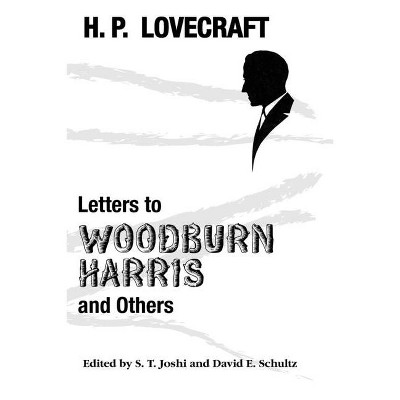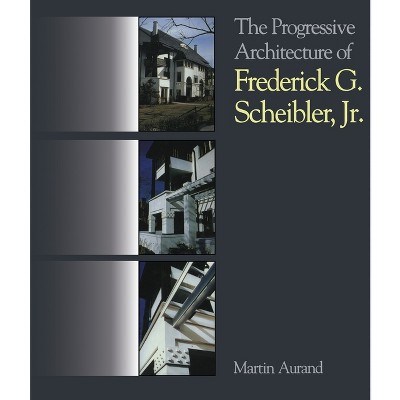Sponsored

The Spectator and the Topographical City - (Regional) by Martin Aurand (Paperback)
In Stock
Sponsored
About this item
Highlights
- The Spectator and the Topographical City examines Pittsburgh's built environment as it relates to the city's unique topography.
- About the Author: Martin Aurand is architecture librarian and archivist at Carnegie Mellon University.
- 248 Pages
- Social Science, Human Geography
- Series Name: Regional
Description
About the Book
Winner of the 2007 Art Libraries Society of North America Worldwide Books Award Examines Pittsburgh's built environment as it relates to the city's unique topography--man's response to an unruly terrain of hills, hollows, and rivers. Adopting a spectator's viewpoint, Aurand studies three "terrestrial rooms" and their development over time.Book Synopsis
The Spectator and the Topographical City examines Pittsburgh's built environment as it relates to the city's unique topography. Martin Aurand explores the conditions present in the natural landscape that led to the creation of architectural forms; man's response to an unruly terrain of hills, hollows, and rivers. From its origins as a frontier fortification to its heyday of industrial expansion; through eras of City Beautiful planning and urban Renaissance to today's vision of a green sustainable city; Pittsburgh has offered environmental and architectural experiences unlike any other place.Aurand adopts the viewpoint of the spectator to study three of Pittsburgh's terrestrial rooms: the downtown Golden Triangle; the Turtle Creek Valley with its industrial landscape; and Oakland, the cultural and university district. He examines the development of these areas and their significance to our perceptions of a singular American city, shaped to its topography.
From the Back Cover
The Spectator and the Topographical City examines Pittsburgh's built environment as it relates to the city's unique topography. Martin Aurand explores the conditions present in the natural landscape that led to the creation of architectural forms; man's response to an unruly terrain of hills, hollows, and rivers. From its origins as a frontier fortification to its heyday of industrial expansion; through eras of City Beautiful planning and urban Renaissance to today's vision of a green sustainable city; Pittsburgh has offered environmental and architectural experiences unlike any other place.
Aurand adopts the viewpoint of the spectator to study three of Pittsburgh's "terrestrial rooms" the downtown Golden Triangle; the Turtle Creek Valley with its industrial landscape; and Oakland, the cultural and university district. He examines the development of these areas and their significance to our perceptions of a singular American city, shaped to its topography.
Review Quotes
"The Spectator and the Topographical City is intellectually stimulating, fresh, and painstakingly researched. Human beings need to be seen in their native habitat, and anyone who has thought about it understands that the built environment enriches or detracts from the quality of our lives. Aurand has a lot to teach us about this subject."-- "Kenneth Kolson, National Endowment for the Humanities"
"Pittsburgh, Pennsylvania, has at last found a muse to celebrate its sublime beauty. . . . A beautifully and intelligently written book replete with scholarly apparatus and index. While it definitely has scholarly appeal, it stands mainly as a tribute to the Pittsburgh landscape; it is a symphony in words to the greatness of a city's morphology viewed from the vantage point of a sympathetic spectator.-- "Pennsylvania Magazine of History and Biography"
Beautifully conceived and written, meticulously researched and documented, and handsomely illustrated.-- "PHLF News"
From the headwaters of the three rivers through Iron City, Martin Aurand reveals the historic terrestrial foundation for Pittsburgh's cultural ecology. Tracking the spectator across the city's unique human and geologic morphology, he reveals that the true city landmark is more than the signature skyscraper or civic monument, but the land markings themselves--a civilizing terrain. As places compete globally for their identity, their topography becomes more than scenery but that distinguishing feature that cannot be replicated.-- "William R. Morrish, University of Virginia"
Like Poe's 'Purloined Letter, ' the topography of Pittsburgh is hidden in plain sight, obscured not only by our scholarly preoccupation with the industrialists, politicians, and philanthropists who dominate most histories of the city, but also due to the simple fact that it is so difficult to see Pittsburgh at a single glance. Dividing the city into three 'terrestrial rooms, ' Aurand proposes a novel design imperative to explain much of Pittsburgh's development: the 'mimetic geomorphic construction.'-- "Dan Willis, The Pennsylvania State University"
Martin Aurand's new book is one of the most eye-opening studies of Pittsburgh in a long time, and one of the most original.-- "Pittsburgh Post-Gazette"
No one interested in the terra still all too incognita of space's third dimension could read Aurand without learning much--and wanting to learn more.-- "Journal of Regional Science"
Pittsburgh in the land is nothing less than artwork unfolding before our eyes . . . Aurand's book is a reassertion of Pittsburgh's topographical beauty.-- "Pittsburgh City Paper"
The highest compliment I can pay Aurand's book is that it transforms us, the readers, into the ideal spectators Aurand's topographical city deserves. Once we become that spectator we can never see Pittsburgh and its architectural history in the same way again.-- "Journal of the Society of Architectural Historians"
This is, in a sense, a book that needed to be written, which you'll see as you read through and realize the wealth of information that Aurand has brought together in accomplishing this study. Many sources and other studies of Pittsburgh have touched on portions of this material, but this book pulls it all together in a satisfying way that has not been fully explored before.-- "Columns, AIA"
About the Author
Martin Aurand is architecture librarian and archivist at Carnegie Mellon University.Shipping details
Return details
Frequently bought together

Trending Non-Fiction
















